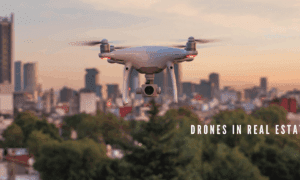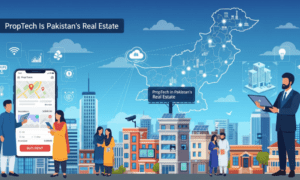Imagine walking through a bustling city street, and with just a glance at your smartphone, you unlock layers of history hidden in plain sight. Or picture donning sleek glasses that overlay digital information onto your surroundings—transforming mundane errands into immersive adventures. Welcome to the captivating world of Augmented Reality (AR), where the lines between our physical environment and digital imagination blur like never before! As technology continues to evolve at an astonishing pace, AR stands at the forefront of innovation, promising not just enhanced experiences but revolutionary changes across industries—from education and gaming to retail and healthcare. Join us as we embark on an exhilarating journey exploring what lies ahead for augmented reality. Buckle up; the future is about to get a lot more interesting!
Introduction to Augmented Reality
Imagine walking through your favorite city, and instead of just seeing the buildings and streets, you encounter a vibrant layer of digital information that enhances your experience. This is the magic of augmented reality (AR). Unlike virtual reality, which immerses users in an entirely different world, AR blends the physical realm with digital elements. It enriches our surroundings by overlaying graphics, sounds, and sensory enhancements onto real-world environments.
Augmented reality has evolved into a powerful tool that captivates both consumers and businesses alike. From gaming to education and healthcare, its applications are vast and varied. As technology continues to develop at breakneck speed, AR stands at the forefront of innovation. Join us as we embark on a journey through this fascinating landscape—exploring its history, how it works, diverse applications across industries, ethical considerations surrounding its use—and what lies ahead for augmented reality in our everyday lives. For more information please Click Here
History of Augmented Reality
The roots of augmented reality (AR) can be traced back to the 1960s. The first head-mounted display, known as the “Sword of Damocles,” was created by Ivan Sutherland. It laid the groundwork for what would eventually blossom into modern AR.
In the following decades, innovations continued to emerge. In 1990, Tom Caudell coined the term “augmented reality” while working at Boeing. He used it to describe a digital tool that assisted workers in assembling aircraft components.
Fast forward to the early 2000s, when mobile devices began integrating AR features. These advancements opened new doors for its use in gaming and social media platforms.
As technology rapidly evolved with smartphones becoming ubiquitous, AR found itself embedded in everyday life through apps like Pokémon GO and Snapchat filters. Each development marked a significant step toward making augmented reality accessible to all audiences.
How does Augmented Reality Work?
Augmented reality (AR) merges the digital and physical worlds by overlaying virtual elements on real-world environments. This integration relies on various technologies to create an immersive experience.
First, AR devices use cameras and sensors to capture the environment in real-time. These components help detect surfaces, objects, and even user movements.
Next, the software processes this data and interprets it using algorithms. It determines where to place virtual images or information so that they appear seamlessly integrated into the user’s view.
Once processed, AR displays these digital overlays through screens or lenses. This could be via smartphones, tablets, or specialized headsets like smart glasses.
Another crucial aspect is tracking technology which ensures that virtual content remains stable as users move around. By continuously updating its position based on user interactions, augmented reality maintains a convincing blend of both worlds.
Types of Augmented Reality
Augmented reality can be broadly categorized into three types: marker-based, markerless, and projection-based.
Marker-based AR relies on visual markers, like QR codes or images. When the camera detects these markers, it overlays digital content onto them. This type is commonly used in advertising and education to create interactive experiences.
Markerless AR operates without specific triggers. Instead, it utilizes GPS data and sensors to place virtual objects in real-world environments. This approach has gained popularity in gaming apps like Pokémon GO.
Projection-based AR involves projecting digital images onto physical surfaces. It creates a more immersive experience by blending the virtual with the tangible world around us. This method is often seen in art installations and architectural designs.
Each type offers unique opportunities for creativity and innovation across various industries. The versatility of augmented reality continues to shape how we interact with our environment.
Applications of Augmented Reality
Augmented reality finds its way into various fields, transforming everyday experiences. In retail, it allows customers to visualize products in their homes before making a purchase. Imagine trying out furniture virtually or testing different paint colors on your walls.
Education has also embraced AR technology. Students can explore complex subjects through interactive simulations that bring learning to life. Anatomy lessons become more engaging with 3D models of the human body displayed right in front of them.
The gaming industry is perhaps one of the most recognizable applications. Games like Pokémon GO have shown how AR can turn entire cities into playgrounds filled with virtual creatures and challenges.
Healthcare benefits significantly as well. Surgeons use AR for enhanced visualization during procedures, improving precision and outcomes while training new doctors with immersive tools that simulate real-life scenarios.
Advantages and Limitations of Augmented Reality
Augmented reality (AR) brings a wealth of advantages. It enhances user engagement by blending digital elements with the real world. This immersive experience can make learning more interactive and enjoyable.
Businesses benefit as well. AR helps in marketing, allowing customers to visualize products before purchasing. Imagine trying on clothes virtually or seeing how furniture fits in your living room!
However, AR isn’t without limitations. Technical challenges persist, such as device compatibility and battery consumption issues. Not everyone has access to high-end technology required for an optimal experience.
Privacy concerns also arise with AR applications collecting data from users’ environments. The balance between innovation and ethics remains delicate.
As developers push boundaries, understanding both sides is crucial for shaping a responsible future in augmented reality advancements.
Future Possibilities of Augmented Reality
The future of augmented reality holds endless possibilities. Imagine walking through a city while your AR glasses provide real-time information about historical landmarks.
Education could transform dramatically as students use AR to visualize complex concepts, bringing subjects like biology and physics to life right in their classrooms or homes.
Shopping experiences may shift too; customers can try on clothes virtually before making a purchase decision. This could revolutionize retail by reducing return rates significantly.
Healthcare is another area ripe for innovation. Surgeons might utilize AR tools during operations, overlaying critical data onto the surgical site for enhanced precision.
Moreover, social interactions will evolve with AR-enabled platforms allowing users to engage in immersive experiences together—no matter where they are physically located.
The integration of augmented reality into daily routines seems boundless and exciting, paving the way for a more interconnected world that blends digital enhancements seamlessly with our physical environment.
Case Studies: Real-life Examples of AR in Action
Augmented reality has transformed various industries, offering innovative solutions and engaging experiences. One notable example is IKEA’s AR app. Customers can visualize furniture in their own homes before making a purchase. This feature allows users to see how items fit into their space, enhancing decision-making.
Another fascinating case involves the medical field. Surgeons use AR during operations to overlay critical information onto a patient’s anatomy. This technology improves precision and reduces risks associated with complex procedures.
The gaming industry also showcases the power of augmented reality through Pokémon GO. Players interact with virtual characters placed in real-world locations, creating an immersive experience that encourages outdoor activity.
The automotive sector leverages AR for enhanced driving experiences as well. Heads-up displays provide drivers with essential navigation details projected onto their windshield, ensuring safer travel while keeping eyes on the road.
These examples illustrate just a glimpse of how augmented reality is being integrated into daily life across diverse fields.
Ethical Considerations for the Use of AR
As augmented reality continues to evolve, ethical considerations come to the forefront. Privacy concerns are paramount; AR technologies often collect data on user interactions and locations. This raises questions about how that information is used and who has access.
Additionally, there’s the risk of misinformation. Altered realities can easily mislead individuals, impacting their perceptions and decision-making. Developers must tread carefully in presenting content responsibly.
Moreover, accessibility poses another challenge. Not everyone has equal access to AR technologies due to economic or geographic barriers. Ensuring inclusivity should be a priority for creators.
Lastly, the potential for addiction cannot be overlooked. With immersive experiences becoming more prevalent, users may find it hard to disconnect from virtual enhancements affecting mental health and social relationships negatively.
Navigating these ethical waters will shape the future landscape of augmented reality significantly.
Conclusion: The Potential Impact and Exciting Future of AR
As augmented reality continues to evolve, its potential to reshape how we interact with the world becomes increasingly clear. From revolutionizing industries like healthcare, education, and retail to enhancing entertainment and communication, AR is steadily weaving itself into the fabric of daily life. With ongoing advancements in hardware, software, and connectivity, the boundaries of what AR can achieve are constantly expanding. The future promises even more immersive, intuitive, and seamless experiences that blend the digital and physical worlds. As we stand on the cusp of this technological transformation, AR holds the power not only to enhance our lives but to fundamentally redefine the way we see and engage with reality.



































